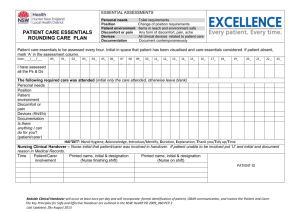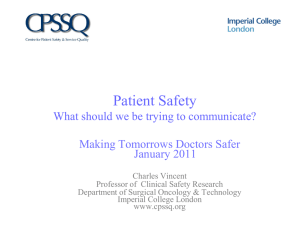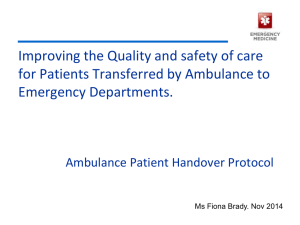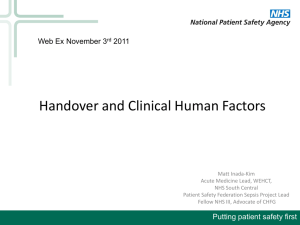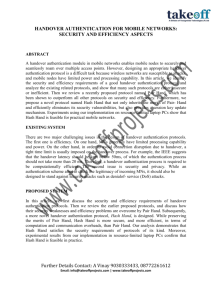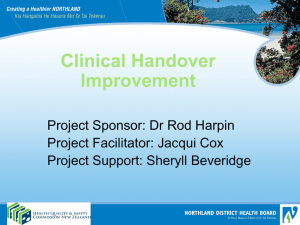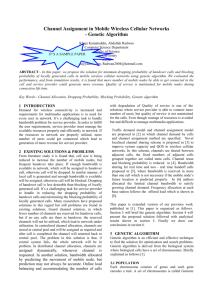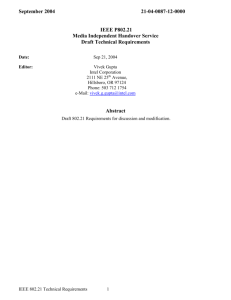Five Criteria doc - IEEE 802 LAN/MAN Standards Committee
advertisement
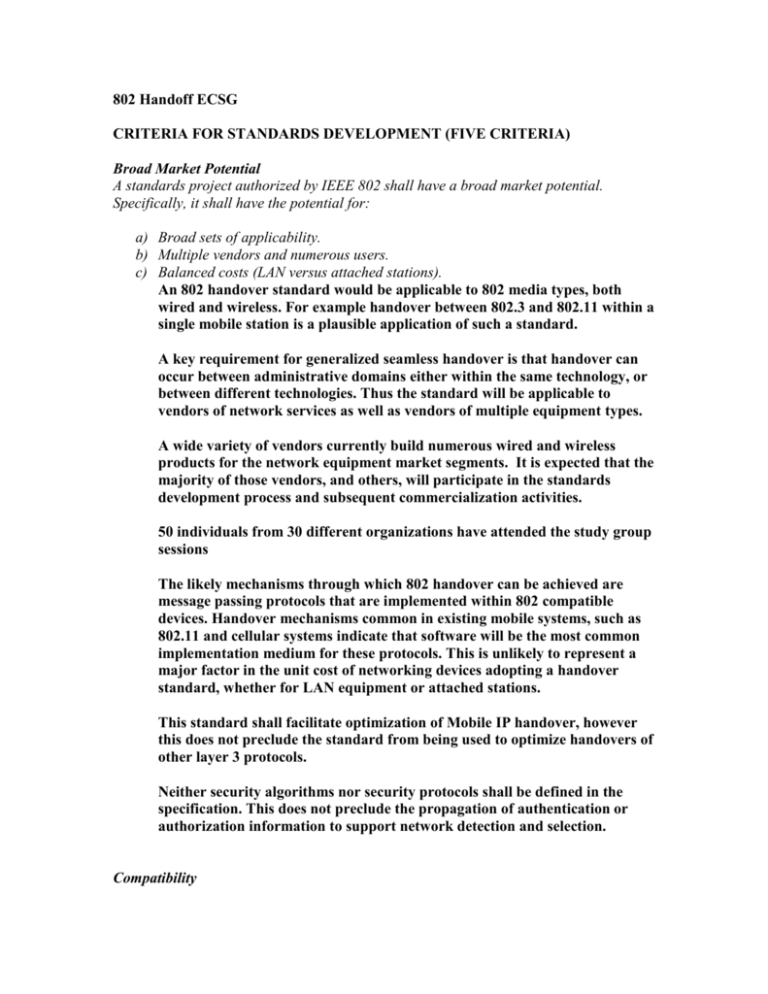
802 Handoff ECSG CRITERIA FOR STANDARDS DEVELOPMENT (FIVE CRITERIA) Broad Market Potential A standards project authorized by IEEE 802 shall have a broad market potential. Specifically, it shall have the potential for: a) Broad sets of applicability. b) Multiple vendors and numerous users. c) Balanced costs (LAN versus attached stations). An 802 handover standard would be applicable to 802 media types, both wired and wireless. For example handover between 802.3 and 802.11 within a single mobile station is a plausible application of such a standard. A key requirement for generalized seamless handover is that handover can occur between administrative domains either within the same technology, or between different technologies. Thus the standard will be applicable to vendors of network services as well as vendors of multiple equipment types. A wide variety of vendors currently build numerous wired and wireless products for the network equipment market segments. It is expected that the majority of those vendors, and others, will participate in the standards development process and subsequent commercialization activities. 50 individuals from 30 different organizations have attended the study group sessions The likely mechanisms through which 802 handover can be achieved are message passing protocols that are implemented within 802 compatible devices. Handover mechanisms common in existing mobile systems, such as 802.11 and cellular systems indicate that software will be the most common implementation medium for these protocols. This is unlikely to represent a major factor in the unit cost of networking devices adopting a handover standard, whether for LAN equipment or attached stations. This standard shall facilitate optimization of Mobile IP handover, however this does not preclude the standard from being used to optimize handovers of other layer 3 protocols. Neither security algorithms nor security protocols shall be defined in the specification. This does not preclude the propagation of authentication or authorization information to support network detection and selection. Compatibility IEEE 802 defines a family of standards. All standards shall be in conformance with the IEEE 802.1 Architecture, Management and Interworking documents as follows: 802. Overview and Architecture, 802.1D, 802.1Q and parts of 802.1f. If any variances in conformance emerge, they shall be thoroughly disclosed and reviewed with 802. Each standard in the IEEE 802 family of standards shall include a definition of managed objects which are compatible with systems management standards. 1. The proposed project will be developed in conformance with the 802 Overview and Architecture. 2. The proposed project will be developed in conformance with 802.1D, 802.1Q, 802.1f. 3. Managed objects will be defined consistent with existing policies and practices for 802.1 standards. Consideration will be made to ensure compatibility with the 802 architectural model including at least 802, 802.2, 802.1D, 802.1f, 802.1Q, and 802.1X. Consideration will be made to ensure that compatibility is maintained with 802 security mechanisms and that existing security is not compromised. Distinct Identity Each IEEE 802 standard shall have a distinct identity. To achieve this, each authorized project shall be: a) Substantially different from other IEEE 802 standards. b) One unique solution per problem (not two solutions to a problem). c) Easy for the document reader to select the relevant specification. 1. Existing 802 standards provide handover within 802 networks. There are no 802 standards to support handover between heterogeneous network types. 2. The need for layer 2 triggers is arising out of fast mobile IP work and cellular networks. 802 has no standards to meet these requirements at layer 2. 3. Existing 802 standards provide diverse mechanisms for detection and selection of network attachment points. There are no standards to enable detection and selection of network attachment point in a media access independent way within 802. Technical Feasibility For a project to be authorized, it shall be able to show its technical feasibility. At a minimum, the proposed project shall show: a) Demonstrated system feasibility. b) Proven technology, reasonable testing. c) Confidence in reliability Handover is a common mechanism, present in many systems such as cellular systems or 802.11 ESSs. Mobile IP, in both v4 and v6 forms, has shown that roaming across heterogeneous systems is possible. Work in the IETF SEAMOBY, TRIGTRAN, CAPWAP/LWAPP projects has highlighted the need for greater interaction between 802 MAC and PHY layers and a roaming layer 3 in order to coordinate smoother, faster handovers. Accordingly it is clear that roaming within the confines of different 802 technologies is feasible and that approaches that might be adopted for roaming at higher layers are feasible. Since the IETF has published in draft form, a role that 802 networks can play in higher layer (above the LLC) handover it is clear that it is possible to incorporate such mechanisms into the 802 framework. The proven ability to handover within 802.11 networks, within cellular networks and within IP networks has proved a minimum set of capabilities for mobile technologies. The nature of message passing protocols is such that the timing and passage of the messages is subject to observation and testing. Methods of testing interruptions to established sessions while being handed over are well established in telephony and data networking practices. Neither security algorithms nor security protocols shall be defined in the specification. This does not preclude the propagation of authentication or authorization information to support network detection and selection. This standard will provide services both across an 802 link and to upper layers to Facilitate the optimization of detection and selection of networks Provide a source of extensible and semantically defined information to facilitate optimized handover decision making Provide a mechanism to access this information over an 802 link. Provide triggers to upper layers Economic Feasibility For a project to be authorized, it shall be able to show economic feasibility (so far as can reasonably be estimated), for its intended applications. At a minimum, the proposed project shall show: a) Known cost factors, reliable data. b) Reasonable cost for performance. c) Consideration of installation costs. Handover procedures have been implemented within cellular networks, mobile IP networks and in media access dependent ways in 802 networks. Cellular systems and 802.11 systems provide real world examples of handover mechanisms within homogeneous networks at layers 1 and 2 (PHY and MAC), whereas mobile IP provides an example of a successful implementation of a layer 3 handover mechanism across heterogeneous networks. These have been proven to be cost effective solutions. The functionality that would be described in the specification represents a marginal increment to the feature set and cost of networking devices and does not represent an originating cost.


